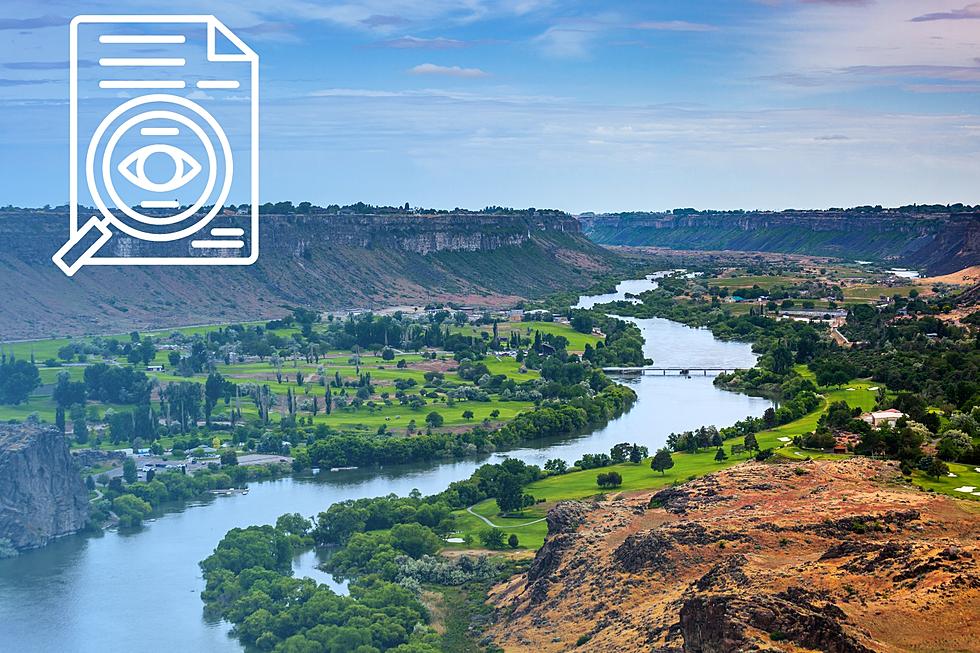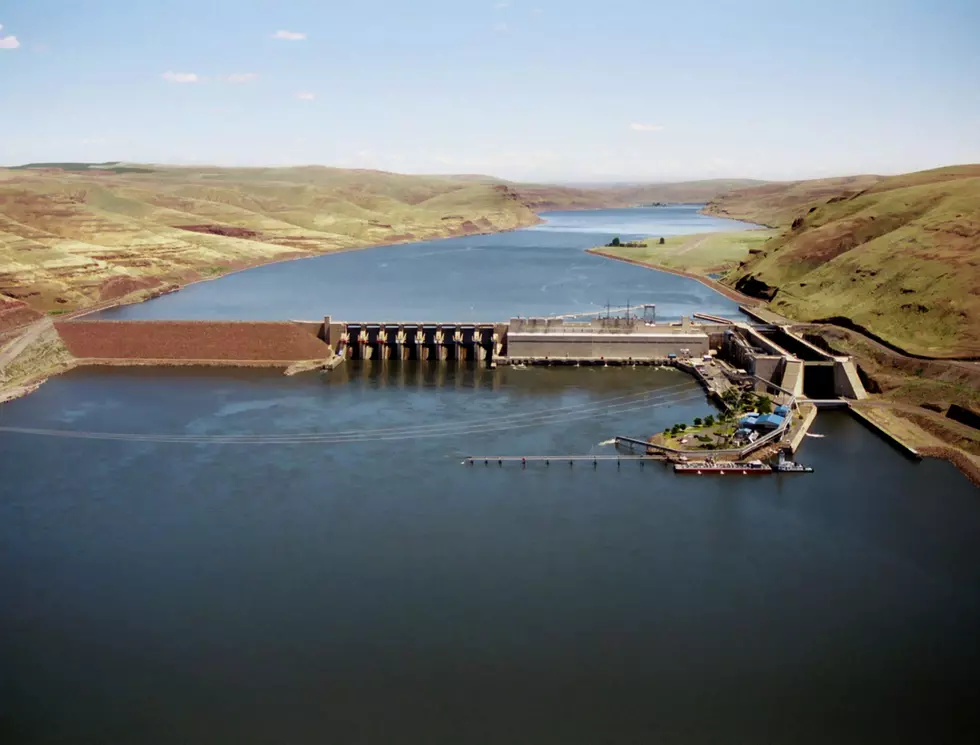
Congressman Bentz Makes Four Proposals To Protect Snake River Dams
Congressman Cliff Bentz (OR-02) has announced a series of proposed amendments to the Water Resource Development Act (WRDA), with a goal to "protect the Snake River Dams and ensure the continued functionality and upkeep of the Columbia River system."
"This isn't just about water. The Snake River Dams and Columbia River are essential to the Northwest’s energy production, navigation, and agricultural industry. It is critical that Congress protect the Pacific Northwest’s economy by approving these submissions.” - Congressman Bentz
What is the Water Resources Development Act?
The WRDA is a legislative package for authorizing federal navigation projects and implementing policy changes for the U.S. Army Corps of Engineers. It is designed to conserve and develop water and related resources, and authorizes the Secretary of the Army to conduct studies, construct projects, and manage research activities to improve the rivers and harbors of the United States.
The act does not provide funding, which comes separately via the Energy and Water Development appropriations process.
Remarks from Congressman Bentz on his proposals:
For decades, the Columbia River has been essential to Oregon's economy, conveying over 65 million tons of cargo in 2021 alone. Thanks to the Columbia River, wheat from the Pacific Northwest reaches the world, and entire regional economies flourish on its banks. Two of my requests to the <i>Water Resource Development Act</i> (WRDA) are to ensure our Columbia River system continues to function. If taken up, these additions would secure funding for upkeep and improvements that this system must have. I have also offered two other amendments to the bill that would safeguard the Lower Snake River Dams from removal.
What Congressman Bentz requests from the WRDA
Congressman Bentz requests four items from the WRDA, as outlined below.
Program Name: Columbia River Pile Dike Maintenance
Description: Pile Dike Maintenance Definition Clarification.
The Corps’ Portland District is conservatively interpreting authorization to maintain the pile dike system in the Lower Columbia River including viewing pile dikes that have disconnected from eroded shorelines as if they are new projects rather than maintenance of existing projects. When maintained properly, pile dikes serve to train the river flow to assist with sediment transport and decrease channel maintenance over time. This also results in preventing draft restrictions which impacts navigation efficiency and safety and benefits climate change goals by reducing fuel consumption and emissions.
Proposed language to clarify the maintenance of pile dikes includes, “Extension of existing pile dikes and channel training structures necessary for maintenance repairs shall include reconnection to the existing shoreline or extension towards the channel in order to restore function is authorized.”
Currently, authorized projects in the Columbia River with pile dikes includes: • Mouth of the Columbia River (MCR) - River and Harbor Act of 1884, 1905, 1954, 1983 • Columbia and Lower Willamette Below Vancouver, WA & Portland, OR (C&LW) - Rivers and Harbors Acts 1912, 1930, 1962, 1999 • Columbia River between Vancouver, WA and The Dalles, OR (VTD) - Rivers and Harbors Act of 1938, 1946 • Columbia River at Baker Bay, WA & OR (Baker Bay) - River and Harbor Act of 1933, 1935, 1945
Program Name: Navigation, Columbia River Channel, Oregon and Washington
Description: Project to be modified: 1999 WRDA Section 101(b) & (b) (13)
It is in the federal interest to support full operating costs for critical equipment used to ensure a safe and operable federal navigation channel. As a trade dependent region, marine highways are critical to the region's continued success. A big part of the success as a trade gateway is attributed to the Dredge Oregon and other dredging equipment. However, the Dredge Oregon was built in 1965, 58 years ago, while the average age of a dredging vessel in the United States is 25 years.
Despite several upgrades, the dredge continues to experience high maintenance costs primarily due to its age and unforeseen structural conditions that are beginning to manifest on a more frequent basis. Two of the three primary work vessels required to maneuver the Dredge Oregon and support the pipeline operation were built in the 1950’s and are well past their useful life. In Serial Letter No. C-0008, dated November 7, 2019, the USACE recognized the need to replace the dredge and asked the Port to develop a long-term capital project plan for the Dredge Oregon that identifies associated future capital projects. Maintenance (including major scheduled dry-docking) and repair costs over the remainder of the dredge’s useful life are expected to be significant, and at some point, will exceed the replacement cost. Forecasted benefits of replacing the Dredge Oregon with a new vessel include an extended useful life, greater operational efficiency, less down-time for maintenance, less overall maintenance expenses, fewer environmental impacts from operations, and potential operational costs savings associated with fuel and personnel. Currently, the Dredge Oregon operates solely on diesel and is not set up to accommodate alternate fuel sources. A new dredge will be designed to convert to Methanol more easily in the future.
Title: LSRD Protection
After several years of litigation and mediation, the Biden-Harris Administration announced a 10-year agreement with various indigenous tribes, states, and dam breaching advocates to operationally and functionally breach the Lower Snake River Dams through the creation of a Pacific Northwest Tribal Energy Program, funding of a comprehensive strategy to “restore salmon and steelhead” to “healthy and abundant levels”, determining replacement energy services through numerous studies.
Title: LSRD Protection
The Lower Snake River Dams include some of the most advanced fish passage systems in the world. They achieve between 90 and 95% passage of juvenile salmon, and adult fish pass the dams via fish ladders to reach their spawning grounds. The dams produce over 3,000 megawatts of carbon-free energy annually, and they are a readily deployable source of reliable power for the Bonneville Power Administration (BPA) during weather events.
The Lower Snake River Dams also support the transport of 50 million tons of cargo to and from the Pacific Ocean annually. Replacing just one barge would mean putting an additional 134 semitrucks on our roads. Considering the number of barges that travel the river each year, replacing the barges for semi-trucks would amount to over 135,000 additional semi-trucks on the road annually. The emissions from these trucks would only worsen some of the conditions that are leading to low salmon returns across the Pacific Northwest – both in rivers that have dams and rivers that do not. For these reasons, I strongly oppose any provisions that would lead to breaching or drastically altering the function of the Lower Snake River Dams.
Oregon's Top 10 Commodities
Gallery Credit: Jaime Skelton
Washington's Top 10 Commodities
Gallery Credit: Danielle Kootman
See Oregon’s Most Expensive Ranch in Central Oregon [PHOTOS]
More From PNW Ag Network









